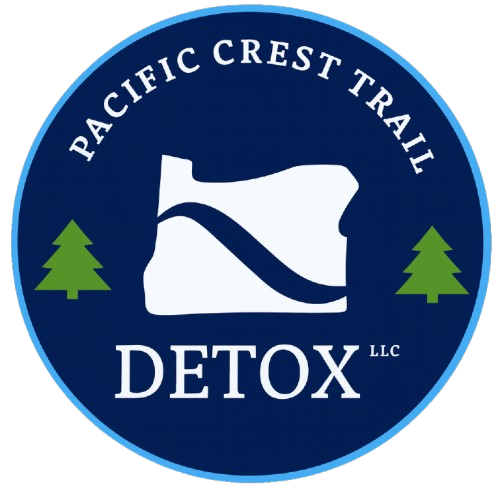Short- to intermediate-acting barbiturates have a moderate onset of action. They were previously used to treat conditions that required rapid symptom relief without prolonged sedation.
Barbiturates exert their effects by enhancing the activity of gamma-aminobutyric acid (GABA), the brain’s primary inhibitory neurotransmitter.
Individuals struggling with barbiturate addiction often exhibit noticeable behavioral changes. Frequent drowsiness, poor coordination, and difficulty concentrating are common indicators. There may also be a decline in motivation, leading to neglect of work, school, or home responsibilities.
Another concerning behavior is the inability to regulate use despite negative consequences. Those dependent on barbiturates may find themselves returning to the drug to cope with stress.
This compulsive pattern of use often leads to:
Family sessions offer a safe, neutral space where loved ones can:
Psychological symptoms associated with barbiturates addiction include mood instability and episodes of confusion or paranoia.
As addiction progresses, secrecy often becomes a coping mechanism. Some individuals lie about their use, alter prescriptions, or visit multiple doctors to secure more drugs.
They may begin subtly but can escalate quickly, often including:
Restlessness and anxiety are often the first signs of withdrawal. When barbiturates are removed, the brain experiences a sudden increase in excitatory neurotransmitter activity.
Many individuals experience an intense feeling of impending doom, even without any external cause.
During early withdrawal, the body reacts with widespread discomfort. Symptoms may include:
Individuals may also experience a sensation of deep physical unease, often compared to an intense flu. Tremors may develop, particularly in the hands, worsening as withdrawal progresses.
Dizziness and blurred vision are common during barbiturate withdrawal. Neurological hyperactivity can also lead to hypersensitivity to sound and light. This can create an overwhelming sense of sensory overload.
Some individuals experience episodes of chest pain and palpitations, which can escalate into cardiac arrest. Individuals with pre-existing heart conditions are at an even greater risk of fatal complications.
To ensure safety, medical professionals carefully track:
This level of oversight is particularly crucial given the unpredictability of barbiturate withdrawal.
During barbiturates detox, continuous assessment helps track symptom progression. This proactive approach enables healthcare providers to intervene before symptoms reach dangerous levels.
Additionally, hydration and nutritional support are crucial in stabilizing the body, particularly for individuals experiencing metabolic imbalances.
Medical professionals manage barbiturates detox by carefully tapering the drug dosage over time. This gradual reduction allows the brain and body to adapt, lowering the risk of severe withdrawal symptoms. Tapering protocols are tailored to the individual’s history of barbiturate use and overall health.
During barbiturates detox, medications are often administered to alleviate withdrawal symptoms. These usually include:
Longer-acting barbiturates, such as phenobarbital, are often substitutes for shorter-acting varieties. This method reduces sudden neurological overactivity, which is the primary cause of seizures during withdrawal.
By reducing excessive nerve signals, it helps stabilize:
When used under medical supervision, clonidine facilitates a smoother and safer withdrawal.
Below is a closer look at the key components and available support level:
Every individual beginning barbiturate detox at PCTD receives a thorough assessment upon admission.
This critical first step helps us to:
Our clinicians carefully review past and current substance use, focusing on:
A thorough understanding of these factors helps us develop a barbiturates detox strategy that reduces complications.
At PCTD, mental health assessments play a critical role in barbiturate detox. Our clinicians conduct a comprehensive evaluation to assess:
These insights help us create a barbiturates detox experience that is both effective and as comfortable as possible.
Because withdrawal affects each person differently, we design our treatment programs to provide the right level of care.
Depending on medical and psychological evaluations, barbiturates detox at PCTD may involve:
To support overall well-being, we integrate holistic therapies that complement traditional barbiturates detox methods.
Some of the most common approaches that we use in our programs include:
Creative expression in art therapy fosters self-worth and a sense of achievement. Addiction often leaves individuals struggling with guilt, but completing a piece of art, in any form, becomes a physical symbol of healing and progress toward recovery.
Guided meditation sessions at PCTD teach individuals to observe their thoughts without judgment. These sessions utilize a range of techniques, including:
Barbiturates detox places significant stress on both the body and mind. To ease this transition, PCTD incorporates stress reduction techniques to promote relaxation and emotional regulation.
These methods usually include:
One of the primary goals of stress reduction at PCTD is to equip individuals with techniques they can use beyond detox to maintain long-term well-being. Learning how to respond to stress in a healthy way reduces the likelihood of relapse and supports a smoother reintegration into daily life.
At PCTD, we recognize that detox alone is not a cure for barbiturate dependence. We emphasize comprehensive post-detox care to ensure a smooth transition into sustained recovery.
Below are the key pathways that transform short-term progress into lifelong change at PCTD:
A strong support system is essential for lasting recovery. Our alumni program helps individuals stay engaged by providing:
This helps individuals gain the motivation and encouragement to navigate challenges and celebrate milestones.
For a full continuum of care, we offer both in-house options for recovery and more flexible outpatient programs with our partner facility, Oregon Trail Recovery.
Below are the key outpatient programs that help individuals stay on track in recovery:
This program is ideal for those who require continued stability and support immediately following barbiturates detox.
This level of care helps reinforce coping mechanisms and relapse prevention strategies while allowing for more flexibility.
This program helps individuals maintain accountability and address ongoing challenges as they rebuild their lives.
If you’re ready to step away from the grip of barbiturates, PCTD offers a safe, supportive path to healing. Our experienced Milwaukie, Oregon team understands the complex nature of barbiturate dependency and develops barbiturate detox strategies rooted in compassion and clinical excellence.
Healing may take time, but the first shift happens when you:






